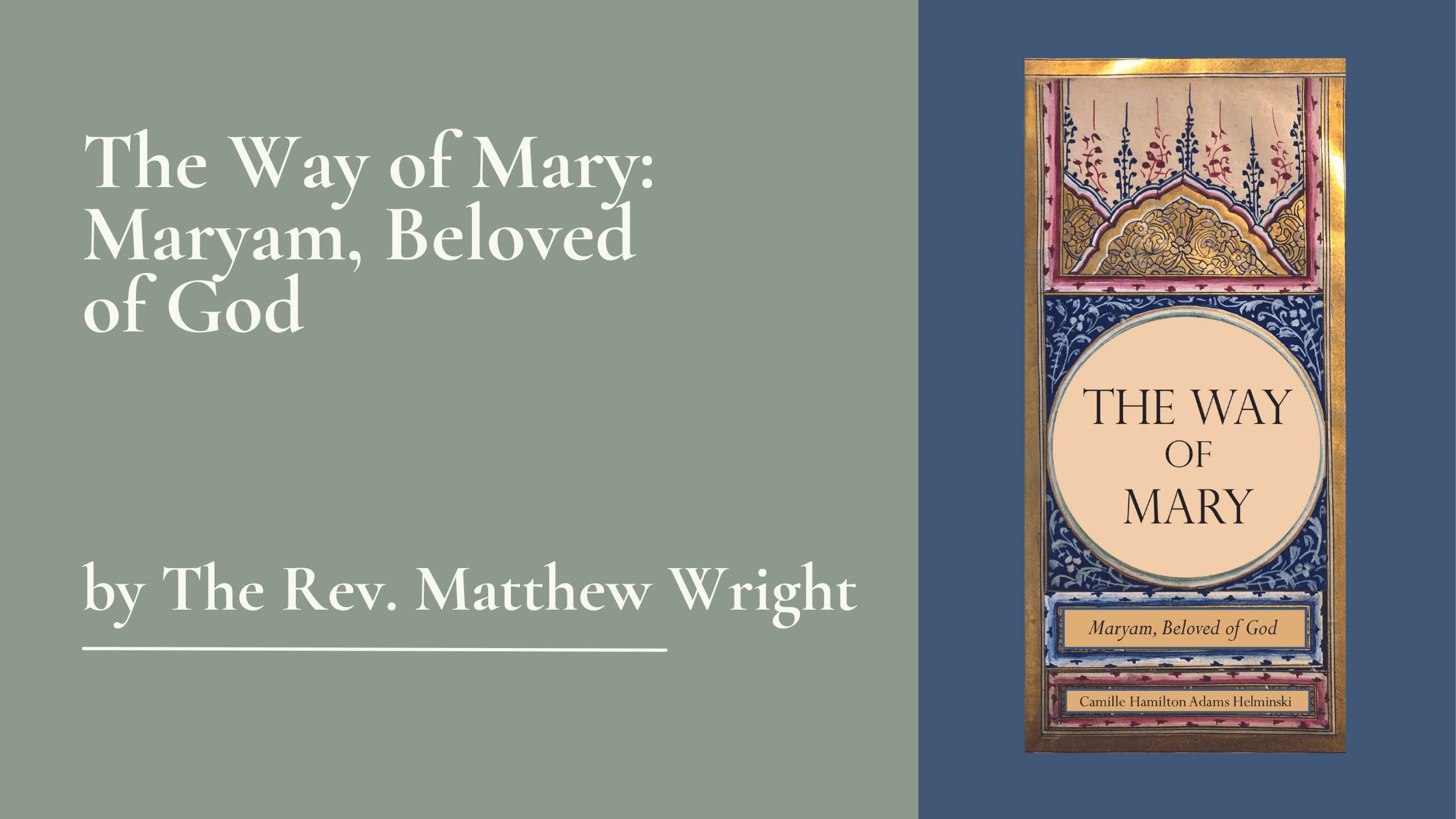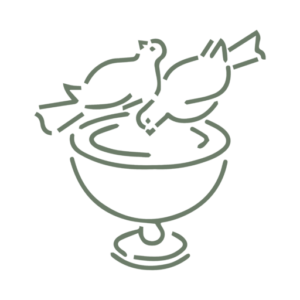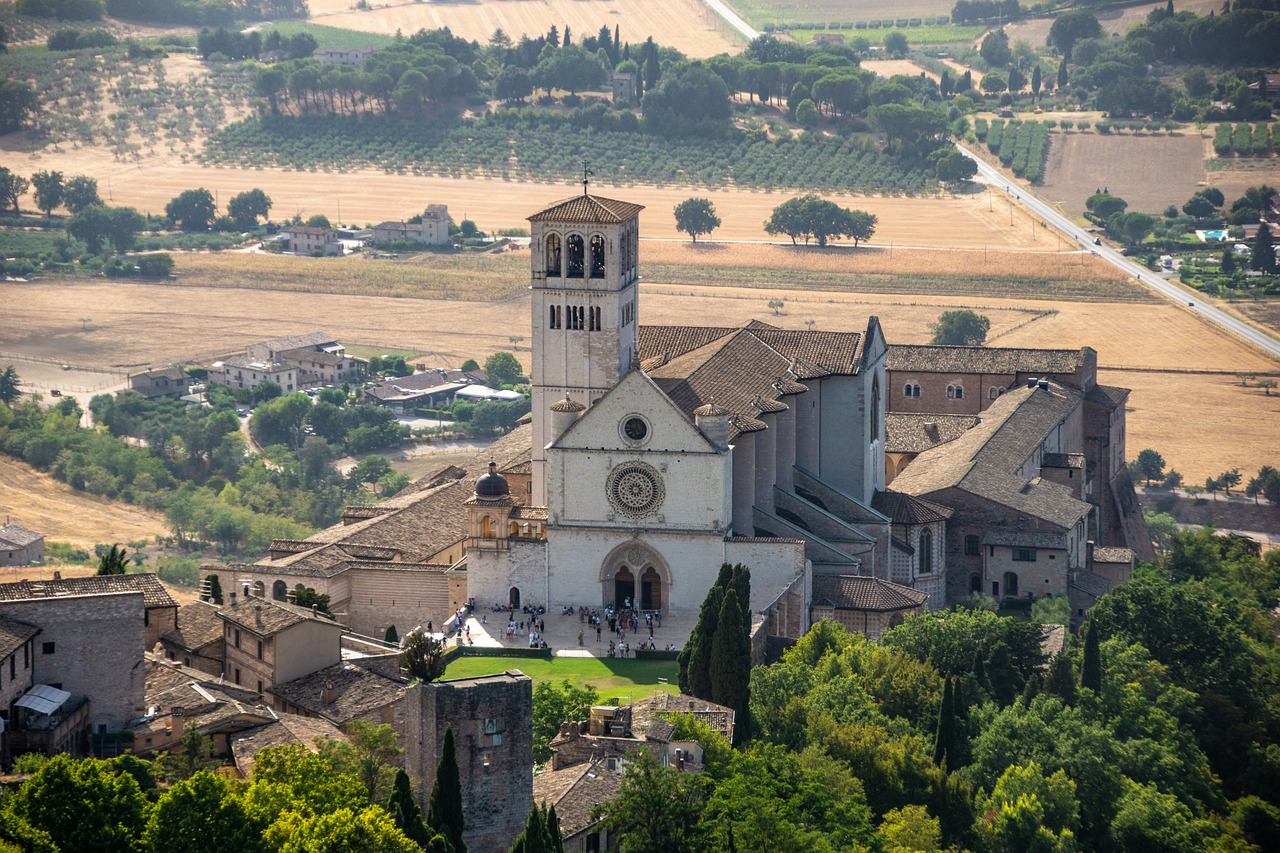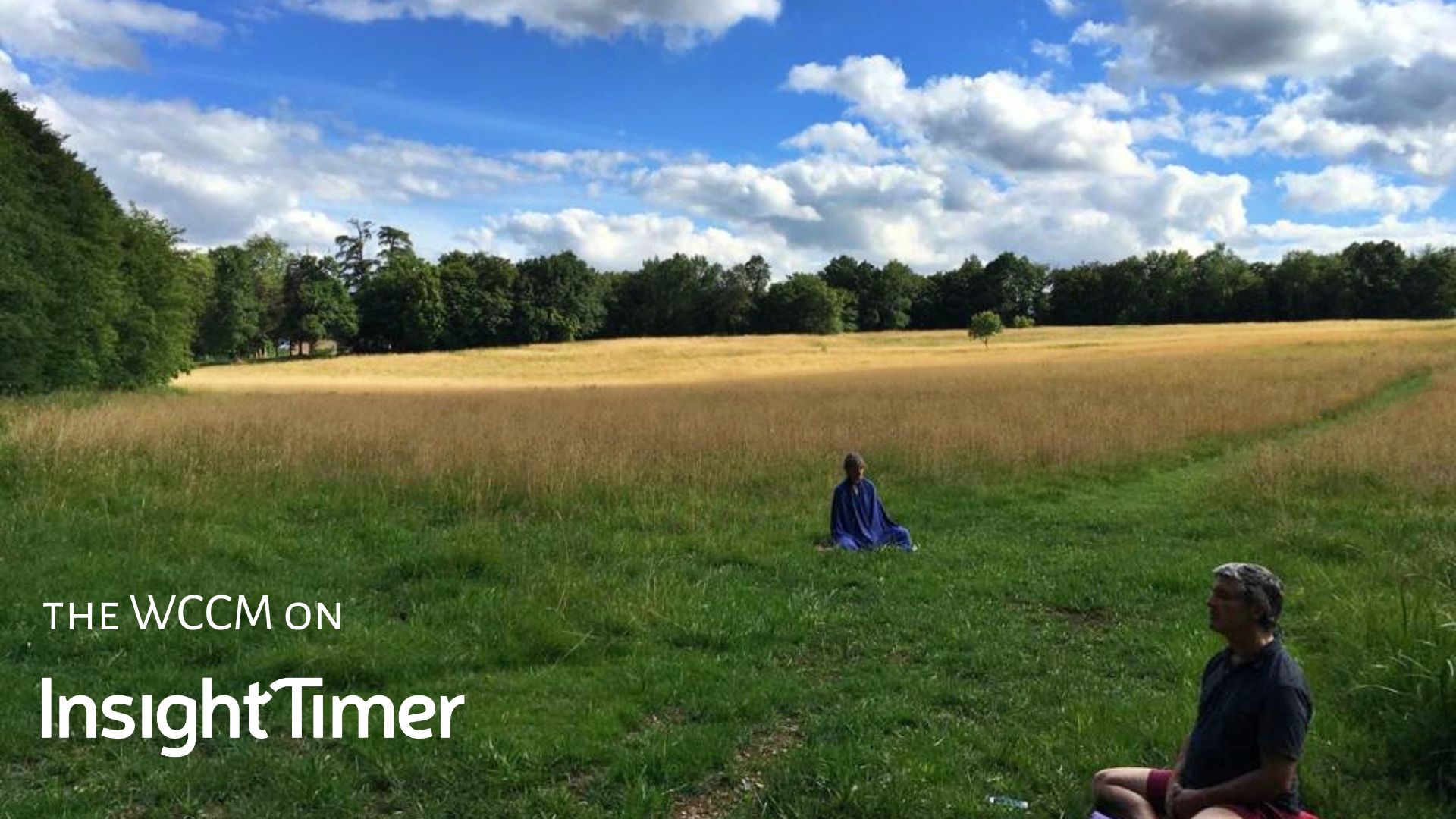Camille Helminski has provided the world with something needed and new in the tradition of hagiography, or devotional literature concerning the lives of the prophets and saints. Carefully researched, The Way of Mary: Maryam, Beloved of God is a spiritual commentary on the life of Mary of Nazareth, the mother of Jesus, drawing widely and deeply on Jewish, Christian, and Islamic sources, but also weaving together diverse insights ranging from Native American to Buddhist traditions.
Drawing on rosary traditions that variously divide the journey of Mary’s life into fifteen “mysteries” or seven joys and seven sorrows, Helminski organizes her text around what she calls “Twelve Stars of Blessing.” She writes, “We have adapted the remembrance of her life to twelve passages or ‘stations’ (maqams), in resonance with the twelve stars of blessing often depicted as surrounding her in radiance, beginning with the moment of the gift of her own birth to her mother, Anna.” These stars carry us from Mary’s childhood in the Temple, through her motherhood, to her elderhood and death. The final star, “Tranquility of Spirit,” explores Mary’s ongoing presence in the spiritual universe through her apparitions over the centuries, ranging from Lourdes to Mexico City.
Before commenting further on the contents of the text, however, it must be said that the first thing one notices when opening The Way of Mary is that the book itself is a thing of beauty. Printed on heavy paper, its pages are filled with full-color photographs of plants and flowers, sacred sites, and works of art associated with Blessed Mary, ornamented throughout (around page numbers and chapter headings) with images of leaves, flowers, and birds (from the work of Cara Grace Chadwick), and gracefully typeset by Daniel Thomas Dyer. A hardcover volume spanning 480 pages, you feel it’s weight in your hands, and in an age of e-books that is a welcome joy. The volume is topped-off with a blue ribbon-marker, adding to the feel that one is holding a sacred text.
Entering the text, one realizes that the physical beauty of the volume is a necessary extension of its content: the way of beauty is part and parcel of “the Way of Mary.” Helminski’s words unfold not as an academic or dogmatic reflection on Mary, but rather as a lengthy devotional meditation on the life of a woman who has inspired countless individuals across multiple religions. Writing deeply from within her own Islamic Sufi heritage, Helminski offers something truly universal. While countless volumes have been written from within a given religious tradition about figures like Jesus or Mary, they are often subtly (or overtly) polemical; sometimes simply a good-natured promotion of a single tradition’s view, but other times more directly an argument for the “Christian” perspective over and against the “Islamic” perspective (or vice versa).
This is where Helminski’s book feels truly groundbreaking. She gives an account of a figure central to two traditions—Christianity and Islam (it should not be forgotten that Mary, or Hazrati Maryam, is mentioned more times in the Qur’an than in the Bible, and has an entire surah, or chapter, dedicated under her name)—and who arose from a third tradition, Judaism. In Helminski’s telling, these three traditions meet, dance, and interweave with absolutely no antagonism, ranking, or claims to superiority. They’re all beautiful angles of vision refracting the light of Mary, who herself is refracting the light of God. Through this approach, Helminski offers Mary to us as a universal human treasure, rather than the limited or contentious possession of any one tradition or community.
Biblical and Qur’anic passages are interwoven with the writings of great Sufi saints and Christian mystics, while commentary is gleaned from contemporary voices ranging from Rabbi Rami Shapiro to the Rev. Cynthia Bourgeault. Helminski’s personal stories of encounters with Mary are woven throughout, and her own original, stunning poetry concludes each section. I was particularly taken by her account of visiting Meryem Ana Evi, a chapel built on the traditional site of Mary’s home in Ephesus, and the longstanding friendship she and her husband Kabir developed with Fr. Tarcy, the Capuchin priest who guarded the site—a friendship that embodies the very essence of the book.
Helminski shares excerpts from the letters she exchanged with Fr. Tarcy over the years, and in one he relates, “Mary teaches people here that every true religion should lead people towards acceptance, tolerance, unity, and service towards one’s neighbor—whatever be his or her religion. […] Why is all this felt here in Meryem Ana Evi? The answer is simple. A deep and personal spirit is felt in this place. It is sensed and experienced here because a person rich in the spirit of love, unity, prayer, sacrifice, welcome, tolerance, and acceptance has left that spirit here. […] This is the house where Mary lived and lives.” (The Way of Mary: Maryam, Beloved of God, p. 346) It is clear that Mary left that same spirit in the friendship recounted here, and that she now lives in the pages of this book as well.
One of Helminski’s sources, The Life of the Virgin, written by St. Maximus the Confessor in the 6th century, was intended by its author to be, in his own time, the first complete “Marian biography,” gathering into one place stories from the life of Mary circulating in oral tradition and various texts. St. Maximus’ book lay largely forgotten for the past thousand years (it was translated into English for the first time in only 2012). Helminski draws several insights and anecdotes from this 6th century compilation, and other early sources, which expand the picture of Mary’s life received from the Gospels and the Qur’an. Through these added stories, Mary emerges as a powerful teacher and leader in her own right, along with Mary Magdalene and the other women who followed Jesus (Mary Magdalene’s story is largely unfolded in the Tenth Star of Blessing, “The Gathering to God: Death and Resurrection”).
One of the legends Helminski shares is about a site where Mary and Joseph, on their way to Bethlehem, stopped to rest. She explains that locals in the region still tell of “a beautiful, ancient tree [that] remained there until the seventeenth century, one that recognized the travail of this beloved mother-to-be and lowered its branches to shield the pregnant Mary from the sun’s heat, near the spring of fresh water that had opened for her…” Eventually a church named Kathisma, which in Greek means “place of rest,” was built in her honor there, and is thought to be the first church in the world dedicated entirely to Mary.
Contemporary archaeological evidence has revealed that “the Kathisma was frequented both as a church and as a mosque by pilgrims on the road, still in the eighth century housing both an altar to the east and a mihrab facing south, serving both Christians and Muslims.”(Ibid., pp. 76-78) This image immediately lodged in my heart, and I realized it was a metaphor for the book itself. Camille Helminski has given us all a Kathisma, a place of rest dedicated to Beloved Mary, in which pilgrim souls—Jews, Christians, Muslims, and any weary traveler—can drink from the spring that has opened and be refreshed.
On our journey through the “Twelve Stars of Blessings,” Mary emerges as universal mother, prophet, Divine Feminine archetype, and, perhaps most of all, loving and accessible guide on the path of human becoming. Along the way, we witness the experience of persecution and flight, as Mary and her family become refugees in Egypt; the anxieties and joys of parenthood, as Mary loses her twelve-year-old child, and finds him again at the Temple; the realities of injustice, tragedy, and loss, as Mary bears witness to the arrest and crucifixion of her beloved son. And through each star, we witness Mary’s deepening trust and surrender, revealing the blessings hidden even in life’s difficulties. Little by little, we realize that her journey is the human journey—is, in fact, our own journey.
Camille Helminski has uniquely updated St. Maximus’ text and task for our time. As he gathered stories of Mary from diverse sources into one, so does she—but writing now not just for a Christian audience, as he did, or for the Islamic Sufi world to which she belongs. Rather, Helminski reaches far, wide, and deep, across time and traditions, giving us something truly unique and incredibly timely. The contemporary movement to reclaim “the Divine Feminine” and to embrace more ecological, relational, and embodied ways of knowing is increasingly not just a good idea, but a necessity. The deep need for healing between the religious traditions of the world, and especially within the family of Abraham, where wounds are so deep and longstanding, is now a sacred duty. The Way of Mary embodies all this work and more, gracefully sidestepping old doctrinal conflicts and logjams with unexpected ease, leaving one wondering what we were ever fighting over in the first place.
The Way of Mary: Maryam, Beloved of God is a volume worthy of being read (and returned to regularly) by any spiritual seeker, and it calls especially to all those who love, or long to know more fully, the Holy Mother, Hazrati Maryam, Blessed Mary—and the healing she offers the world. Beloved Rose of God, her fragrance permeates every page, and as you read these words, it is sure to permeate your heart as well.








6 thoughts on “The Way of Mary: Maryam, Beloved of God”
As an elderly Anglican woman priest, I have never before felt at peace with the Rosary and devotion given to Mary. Just in reading this beautiful review of The Way of Mary I am at last at peace.
In our present times of greater inter-faith dialogue in faith communities Camille Helminski’s own background of Islamic Sufism and painstaking exploration of all things Mary/Maryam across the Abrahamic faiths gives me a deep sense of hope for peace and co-operation between us. Thank you Rev. Wright for your moving review.
Una estupenda reseña, llena de vida y amor, la valoro especialmente ya que nunca conocí una espiritualidad Mariana que enamoré mi corazón.
Gracias.
Una estupenda reseña, llena de vida y amor, la valoro especialmente ya que nunca conocí una espiritualidad Mariana que enamoré mi corazón.
Gracias.
Where can you purchase it?
I am a 60 years old practising muslim raised in a protestant American missionary high school for 8 years. During my university years stayed in the house of a catholic cardinal in Belgium for four years. I worked as an ophthalmologist in the Katholieke Universiteit Leuven. I witnessed the sincere love in many people as well as in people of Anatolia, Egypt and Jordan that I became relative organically. As in Hz. Meryem, the pure lover of God, we all should acknowledge one another and not miss the opportunity to enjoy the main source. Thank you for your effort in writing this book which can be a key to many hearts. Eyvallah
I would also like to know how to buy this book. Thank you